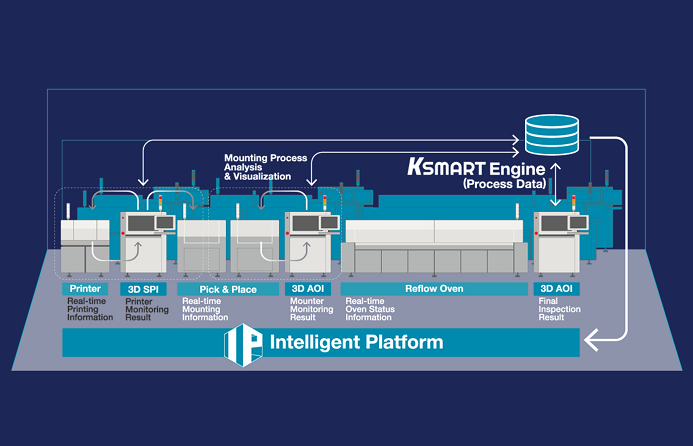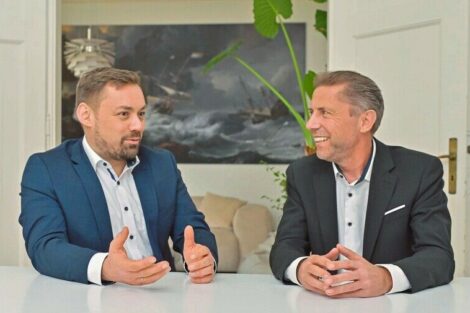The litany of major OEMs setting up shop in Eastern Europe reads like a Who’s Who of the industry’s largest, best known companies. Contract electronics manufacturers (CEMs) have also installed profitable manufacturing centers: Celestica, SCI, Ixtant, Dovatron, Solectron, Flextronics, Nat Steel, Elcoteq, Avex, etc., have facilities there.
The reason for Eastern Eu-rope’s tremendous growth can be summarized in one simple phrase: inexpensive quality labor. In an industry governed by tight margins, yet paradoxically dependant on the absolute need for sophisticated capital equipment, the one remaining method of increasing profit is by reducing labor costs. A recent report by Michael Hannon Marketing clearly shows the difference in labor costs between East and West Europe. German labor costs (calculated as labor rate plus social cost) were estimated to be 220% of the UK rate. However, drive just 150 miles or so from the German border to the East and labor rates are dramatically lower: 24% of the UK rate in Poland and Hungary, 20% in the Czech Republic and 14% in Romania. It’s no wonder that these four countries are fuelling a migration of OEMs and CEMs that is expected to double or triple in the next year or two.
Of course, cheap labor without an educated, industrious workforce is next to useless. We in the West, have come to believe that workers in the former Soviet Bloc countries have lost their commercial drive. That perception is partially true, but as manufacturers have returned to these countries, and as governments have seen the economic benefits, the drive and the willingness to work hard has returned. Most importantly for high-tech industries, the workforce is well educated, at management and engineer levels generally bi- or tri-lingual, and experienced in electronics.
The combination of substantially lower labor costs, an educated workforce, a suitable location of many production sites, EU incentives and an urge for absolutely cost-efficiently produced consumer goods such as mobile phones have resulted in a resurgence of Eastern Europe’s electronics industry. For equipment vendors like Speedline Technologies, this is an exciting challenge. One that promises substantial rewards for those who are willing to work through the sometimes-monumental problems that can arise when West meets East.
Yesterday and today
If we look at Hungary, the Czech Republic and Poland for example, there is a long tradition of solid engineering expertise, derived in many cases from links with Germany. These countries have a proud history of higher education and excellent technical training, plus a strong industrial infrastructure. The Communist regimes that poured over Eastern Europe in the early 1950s certainly devastated this technical heritage, but the potential reservoir of talent and resources remained.
When the ancient regimes collapsed, many countries, in particular Hungary, sought to quickly re-establish their electronics manufacturing expertise and to re-vitalize their Western links. About eight years ago, first OEMs began moving into Hungary and found its geographic location and workforce particularly attractive. As more OEMs arrived, naturally their suppliers, CEMs, followed suit. Today, major companies operating in Hungary include Nokia, SCI, Nat Steel, Elcoteq, Sony, Avex and Bosch with a total of more than 70 production lines. Seeing this, the Czech Republic, Poland and Romania have also sought to attract high-tech industries. Yet Hungary continues to lead the way as the home of a dozen or more major electronics companies, followed not too closely by the Czech Republic, Poland and now Romania.
Romania, a desolate, poor country under a harsh dictatorship, now becomes the rising star in the region, and offers labor rates that are half of its more ‘Westernized’ sister countries. Not only are current labor rates lower, but the cost development is expected to remain low. Hungary, Poland and the Czech Republic are beginning to see higher overall costs as they move nearer to Western Europe, both culturally and economically.
Recently, Solectron opened a site in Romania and early results are promising. The facility demonstrates that in spite ofa weak and, in some cases,a non-existent infrastructure (power plants had to be built from scratch), skilled laborand government support have helped to overcome initial difficulties. With continued success, look for other companies from Europe, America and Asia to take advantage of Romania’s low cost labor and economic incentives.
A commitmentto Eastern Europe
As our customers began opening facilities in Eastern Europe, Speedline, too, began to expand into the region. Quickly and cautiously we initiated a strategy that would help support our equipment throughout Eastern Europe. These screen printers, dispensing machines, reflow and wave soldering systems have been well entrenched in major facilities. Initially, and still in many cases, our systems were purchased by companies in the West for use in their Eastern European plants. Most companies buy in the West, but as facilities grow in the East we are starting to see the development of purchasing departments on site. Today, we still drive a lot of our sales initiatives from Scotland, as most companies moving to Eastern Europe use their Scottish facilities as a jumping-off point.
In 1997 we began managing Eastern European business from our Frankfurt office, so that our customers there could enjoy the same level of service that we provide globally. This required setting up a corporate infrastructure, beginning with the appointment of exclusive agents in Hungary, the Czech Republic, Romania and now Poland. Like our customers, we realised that it would be difficult, if not impossible, to manage a local Hungarian staff, for example, from the UK or Germany. Consequently, we work in joint venture with local representation. In each country, our exclusive representatives offer the full range of our equipment. This infrastructure has been completed over the past twelve months and reflects how quickly Speedline sees these markets growing. We employ engineers in each region who are responsible for providing service and assistance to our agents and customers. And soon, we will be adding sales managers for each country. In addition, Speedline engaged a project manager in Scotland, again to help those customers with Scottish facilities that are looking to establish Eastern European sites.
As in any other part of the world, our local service engineers are on call and available at almost a moment’s notice. Eastern European customers have 24 hour on 365 days telephone access to our expertise and support. In addition, we have 20 service engineers in Germany and another 30 in the UK who can and do supplement the local force. Customers receive full hands-on training at Speedline’s Frankfurt and UK training facilities, as well as on site in the local language. In huge installations, we have an engineer permanently resident on site.
Another critical issue, the availability of spare parts, has been addressed with the opening of a hub in Amsterdam. Although we do maintain a substantial level of spare parts in each of the four Eastern European countries, the hub is the central source for spares. Most deliveries are overnight, although in some areas the vagaries of customs can cause temporary delays. We work closely with administrations and shipping agents to speed delivery and expect that each of the countries will continue to improve its infrastructure and cut back bureaucracy so that clearing customs will become simpler.
Things to come
Production growth rates for Eastern Europe remain extremely high. Speedline equipment has been a large part of this growth, and our commitment to the region and to our customers will continue to expand. In fact, we expect to triple our financial investment over the next two years. Besides the already established organization, we will also be taking steps into the Russian market. This is a vast area with tremendous potential. But high political instability and extensive bureaucracy have until now made Russia a less than ideal candidate for expansion, not just for us, but forCEMs and OEMs and other equipment companies in general.
Speedline has installed a network of local customer support centers, offering sales and service, backed with a spare parts stock available to our expanding list of customers in Eastern Europe. We believe this organization is what sets us apart from those companies who seem to exhibit only a passing hit-and-run interest in this area.
There is no doubt that shop floor expansion in EasternEurope will greatly outpaceWestern percentage growth over the next few years. Lower labor costs, a skilled workforce and, not to be forgotten, immediate access to burgeoning Eastern European consumer markets, will spur growth in the very near future and beyond. This potential is not, however, without risk. No company can expect to be a player in the region without a relaible long-term strategy, local presence and corporate organization hat can handle the inherent problems of language, local custom and the residue of failed communisteconomics. But for those who are prepared to make the necessary investment and to work hard to overcome the difficulties, the rewards will be substantial.
EPP 212
Unsere Webinar-Empfehlung
Die Nutzung der 3D-Mess- und Prozessdaten bringt die Produktionssteuerung auf die nächste Stufe. Echte 3D-Messung ermöglicht KI-basierte Prozessmodellierung zur Vorhersage von Parameteränderungen und -defekten oder zur Ursachenanalyse bis hin zu einzelnen Werkzeugen und Best…
Teilen:













